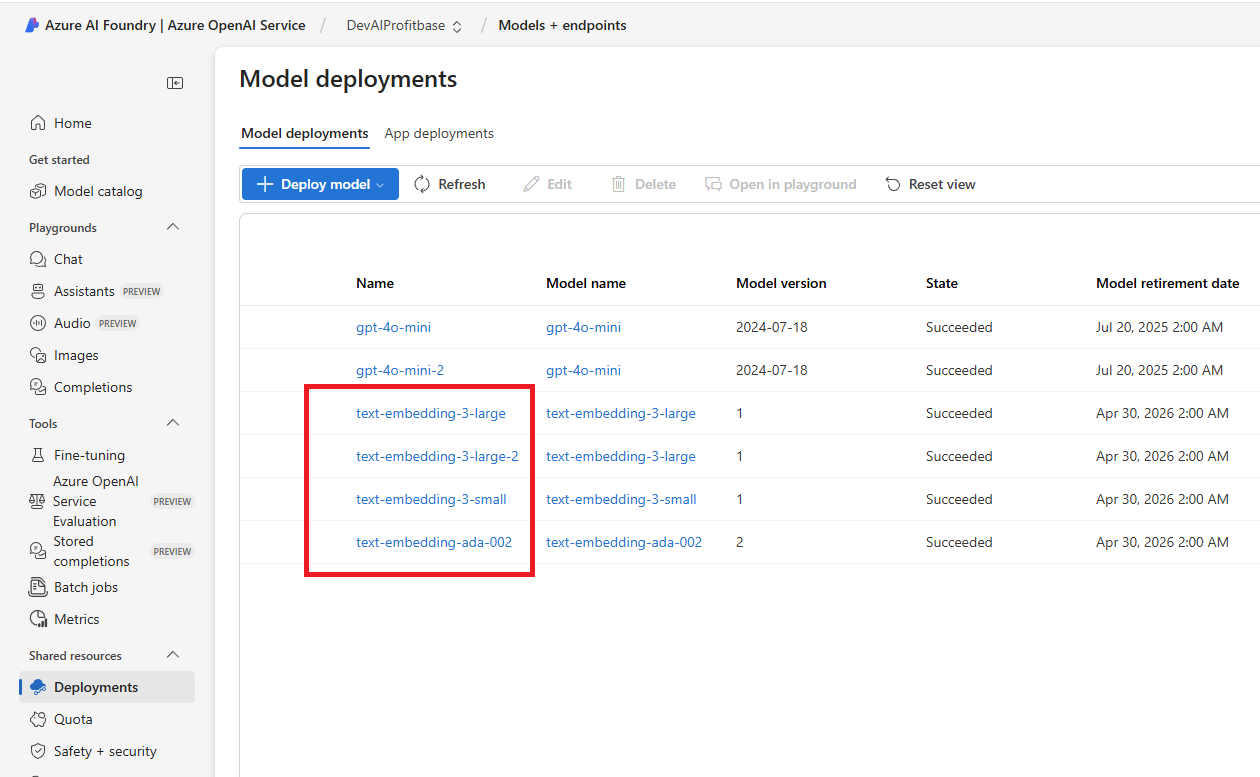Generate embedding
Generates an embedding vector using an Azure OpenAI embedding model.
Use this action when you want to generate an embedding vector to do manual vector operations (write your own queries) against databases like PostgreSQL or Azure SQL, for example vector search or inserting / updating vector records.

Example 
The example above illustrates part of a Flow that stores a document into SQL Server (used as a vector database). It uses the Split text action to split a large document into chunks. Then, for each chunk, we generate an embedding, and store the text chunk along with the embedding into SQL Server as a vector record.
Properties
| Name | Type | Description |
|---|---|---|
| Title | Optional | The title of the action. |
| Connection | Required | Defines the connection to Azure OpenAI. |
| Deployment model name | Required | Specifies the name of the deployed embedding model, which corresponds to name (not the model id) of the deployed embedding model in Azure Azure AI Foundry or the Azure portal. In Azure AI Foundry, the deployment name can be found in the Deployments screen as shown below. NOTE! Make sure you select an Embeddings model (for example text-embedding-3-large), and not something else like Chat completion or Text to speech. |
| Dimensions | Optional | Some embedding models (like text-embedding-3-*) support configurable dimensionalities, for example 768 or 1536. Make sure you don't specify a dimensionality greater than the max value of the model. |
| Input | Required | The (text) input that you want to generate an embedding for. |
Returns
This action returns a ReadOnlyMemory<float>.
Note
When using ReadOnlyMemory<float> in database queries, you might have to manually convert it to other formats depending on which database engine you are targeting. For example, Azure SQL currently requires ReadOnlyMemory<float> to be converted to a string before it can be used in a query (because vector support in Azure SQL is currently in preview). However, we expect that once the VECTOR data type is GA, you will not have to do the manual conversion shown below.
Example
You can convert ReadOnlyMemory<float> to a string using a Function action, and then use in in an Azure SQL query like shown below.
public string ConvertToString(System.ReadOnlyMemory<float> embedding)
{
return JsonSerializer.Serialize(embedding.ToArray());
}
-- @embedding is passed as parameter.
-- Because vector support in Azure SQL is currently in preview,
-- we need to explicitly cast the string to the vector data type.
declare @emb VECTOR(1536) = cast(@embedding as vector(1536))
SELECT Text, VECTOR_DISTANCE('cosine', Vector, @emb) AS Score
FROM VectorTable
WHERE VECTOR_DISTANCE('cosine', Vector, @emb) < 0.7
Deployment name
To find the Deployment name, look in the Deployments screen in Azure AI Foundry.
